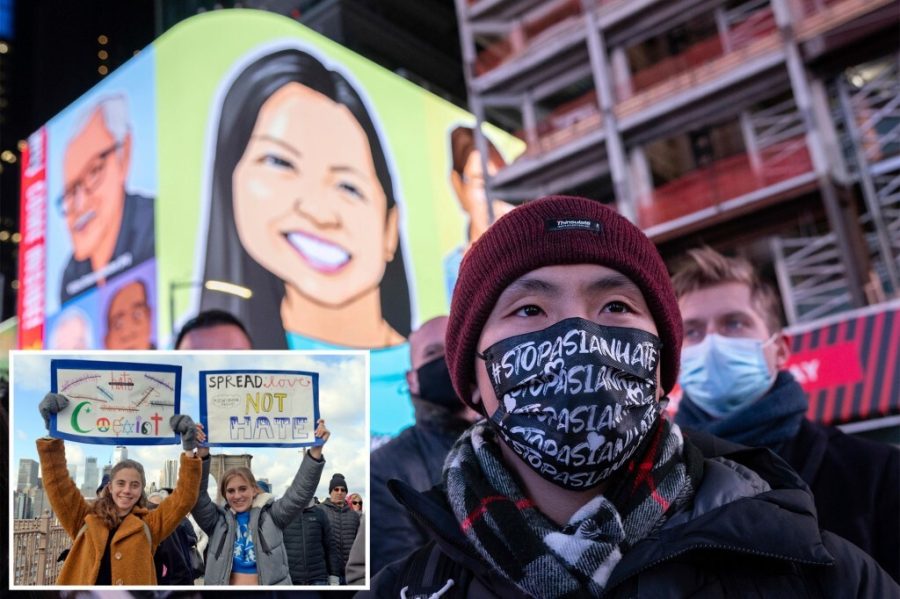How Media Manipulates Anti-Asian Hate Crimes
New York City had the largest increase in reported anti-Asian hate crimes last year. Incidents targeting the Asian community rose by 343% in 2021.
Last March, four teenage girls assaulted a 52-year-old Asian woman on a bus in the Bronx. Just this year, a 40-year-old Asian woman was shoved onto the subway tracks to her death, and more recently, a 23-year-old Thai model was beaten and robbed.
Many of these hate crimes occur in low-income areas, causing some to defer responsibility to socioeconomic inequalities rather than the individual. Allowing an individual to be free from accountability destabilizes functioning societies. Corporate media actively manipulates the current anti-Asian hate crime wave in pursuit of perceived social justice.
NBC recently described the hate crime wave as being predominantly at the hands of white men. The source of this delusion was the University of Michigan’s Virulent Hate Project. The report, Anti-Asian Racism in 2020, reviewed 4,337 news articles published between Jan. 1 and Dec. 31, 2020, reporting 1,023 incidents.
Only 112 incidents involved physical harassment and violence. 16 examples explicitly identified the offenders, with three perpetrators identified as Black men.
This one example debunks the study with ease: in 2020, six Black men were arrested and charged with hate crimes and other counts related to over 70 incidents of robbery, burglary and theft targeting Asian Americans. The group was ultimately linked to 177 robberies targeting almost all women of Asian descent. The perpetrators used ethnic slurs to refer to their victims, making the motivation apparent.
The Virulent Hate Project’s study must have missed that story and its 177 confirmed biased incidents — that is excluding the cases still being investigated. This, and the three New York incidents previously mentioned, make one wonder the genuine efficacy of the study. A simple Google search will easily match at least four incidents with Black perpetrators, and yet this study could only find three.
Russell Jeung, a co-founder of the hate incident reporting forum Stop AAPI Hate, warned not to jump to conclusions regarding racial motivations: “The anti-China rhetoric, the white supremacy — that does influence all sectors of society,” said Jeung.
Jeung is one of many who implicitly advocates for less, if not any, criminal accountability. In an NBC article, Karthick Ramakrishnan, founder of AAPI Data, a company that does demographic research on Asian Americans and Pacific Islanders, thinks that prejudice between Asian Americans and Black people could contribute to the belief that most anti-Asian attacks have been committed by Black people. Ramakrishnan is quoted as saying that “whatever aspect of anti-Black racism or racial prejudice that some Asian Americans might have will also matter, in terms of what ends up being more prominent.”
Others in corporate media like NBC’s Kimmy Yam reference hate crime studies from older data between 1992 and 2014.
In a Newsweek Opinion article, Craig Harvey, a Black man, said that recent policies have been designed to drive a “racial wedge” between Asian and African Americans surrounding the affirmative action issue. To Harvey, it’s the conservatives’ fault. He, like Yam, references data from the previous decade.
President of the Chinese-American Planning Council, Wayne Ho, told The New York Times many of his Asian colleagues were verbally harassed during the pandemic but chose not to contact law enforcement. He stated they worried the criminals could be mistreated by the police. Ho’s associate Alice Wong echoed a similar sentiment, asking herself, “Do I want this person in jail?”
Some, like Chris Kwok, an attorney and board director of the Asian American Bar Association of New York, have called for lowering the bar for hate-crime crimes and toughening those penalties. New York State law already permits certain offenses to be upgraded to hate crimes, increasing the prison sentence.
In February of last year, former Mayor Bill de Blasio sent 500 officers to patrol the subway system. Within a few months, he sent an additional 250. De Blasio also created the Partner Against the Hate FORWARD initiative to help fund and support six nonprofits. The program will distribute grants between $5,000 and $20,000. The initiative is said to encourage individuals, organizations and academic institutions to develop projects to reduce hate violence.
Another bill is in the works to standardize systems for New York courts, police and prosecutors in reporting hate crime incidents. Centralized systems may be an efficient way to handle these particular crimes.
President Joe Biden signed into law the COVID-19 Hate Crimes Act. It is intended to speed up the review of “pandemic-related hate crimes” and provide grants to local law enforcement to improve reporting of bias-driven incidents. It also directs the Justice Department to assign a “point person” to help review “COVID-19 hate crimes.” Public education campaigns will also be implemented to “curb racially discriminatory language in describing the pandemic.”
The Biden administration uses careful language in addressing the anti-Asian hate crimes. It is the purposeful denial of the crimes and accountability of offenders. What is a COVID-19 hate crime, anyway? Why not just call it what it is — an anti-Asian hate crime?
Manhattan doesn’t have the time for these semantics or other failed initiatives like the “war on drugs” or the “war on poverty.” Mayor Eric Adams and Governor Kathy Hochul plan to work frequent and regular sweeps of the subway system. The boots-on-the-ground method will secure areas, raising the quality of life and ultimately reducing crimes — order must be re-established.
Establishing accountability through prosecuting DAs and stronger disincentives will help curb crime. Police should continue to walk the subways with a higher presence in crime-ridden areas. Politicians and corporate media need to stand back and let law enforcement do their job.
Brian Pfail, FCLC ’22, is a communications major from Ronkonkoma, N.Y.










































































































































































































